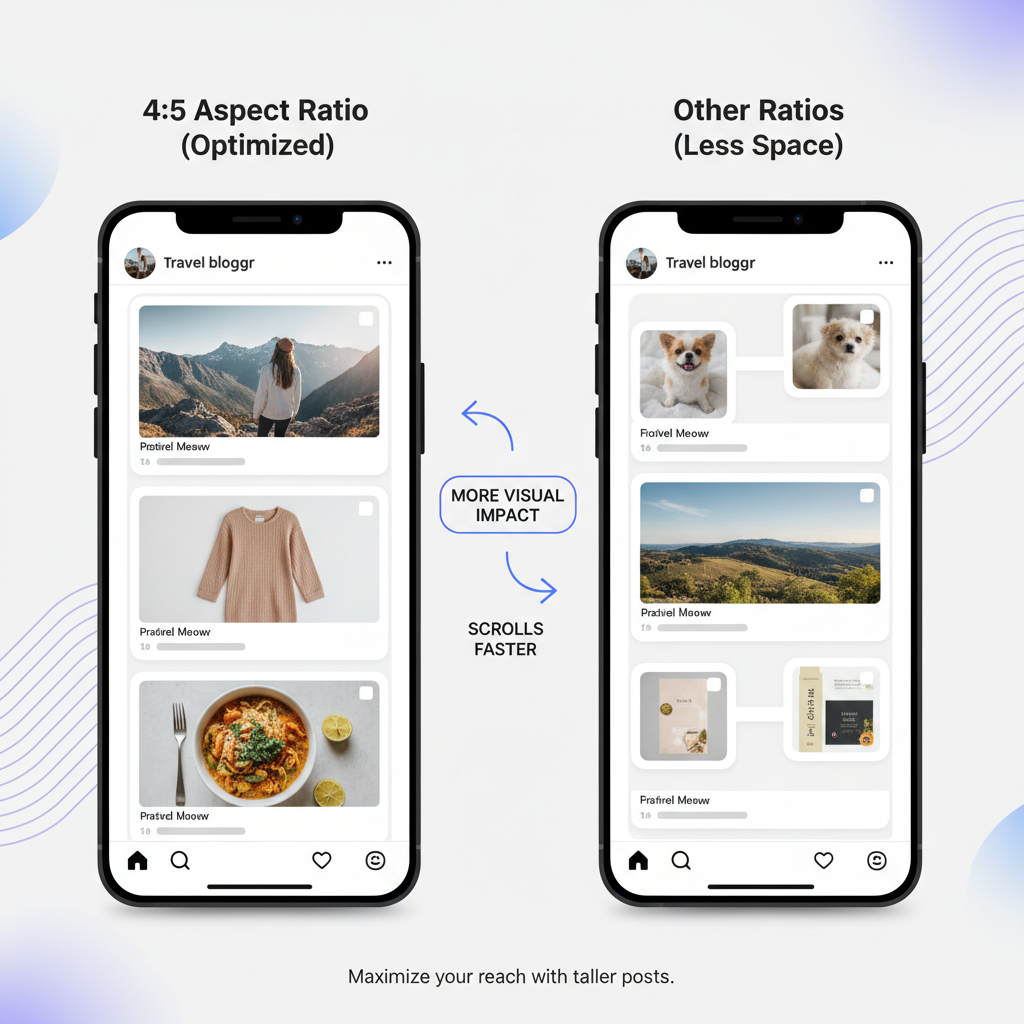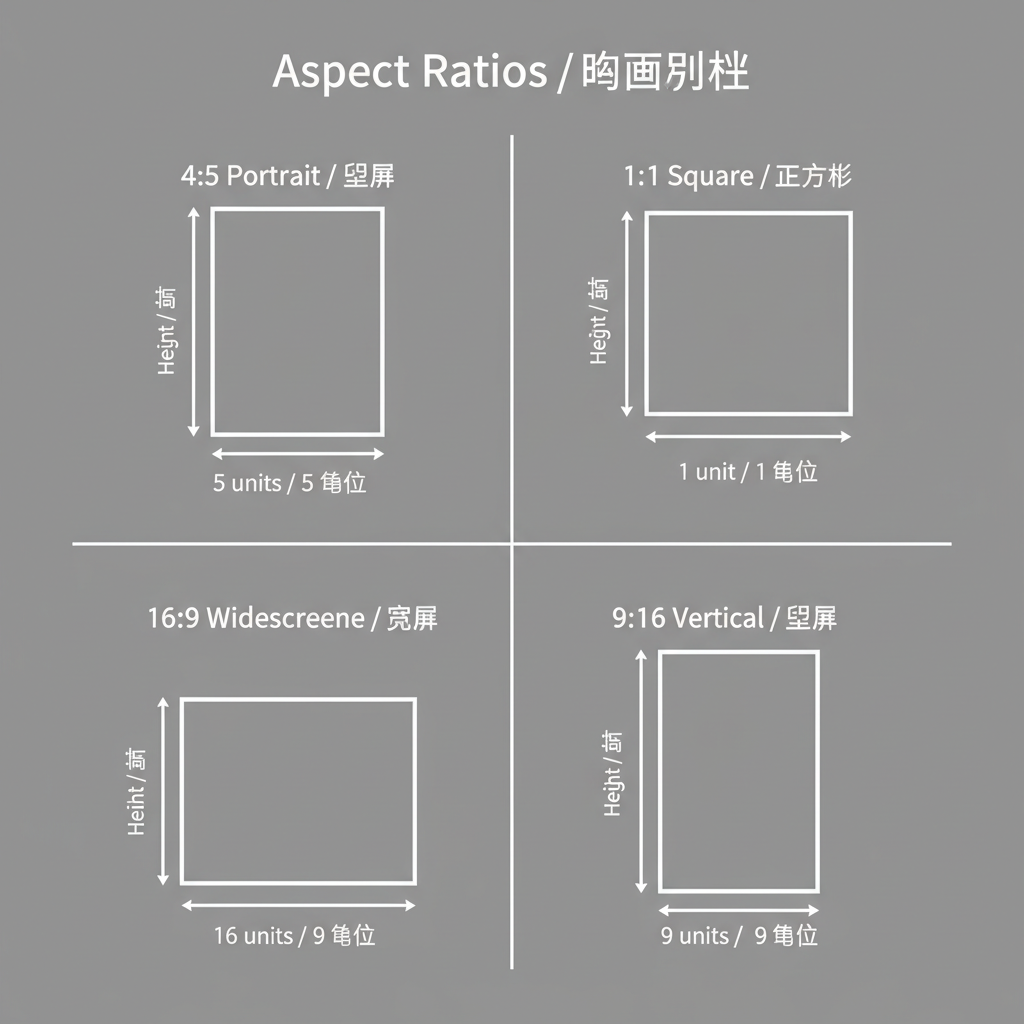4:5 Aspect Ratio Resolution Guide for Social Media Images
Learn how to use the 4:5 aspect ratio with ideal pixel dimensions for social media to maximize visual impact, engagement, and image quality.

Introduction to the 4:5 Aspect Ratio Resolution
The 4:5 aspect ratio resolution is a highly effective format for creating vertical images that stand out in mobile-first environments, particularly on social media platforms. This guide explains what the 4:5 ratio is, why it matters, ideal pixel dimensions, and how to use it effectively. By mastering the 4:5 format, you can maximize visual impact, improve engagement, and maintain optimal image quality across channels.
---
Understanding Aspect Ratios and Common Formats
Aspect ratio refers to the proportional relationship between an image’s width and height. It’s expressed as two numbers separated by a colon — for instance, 16:9 means an image is 16 units wide and 9 units tall.
Common aspect ratios include:
- 16:9 – Widely used for HD videos and widescreen displays.
- 4:3 – Traditional TV screens and early computer monitors.
- 1:1 – Perfect square format, common in social media profiles.
- 4:5 – Portrait ratio that is taller than it is wide.
Each ratio creates a different visual effect and can influence how your content is perceived and displayed.

---
What is the 4:5 Aspect Ratio?
The 4:5 aspect ratio means the height of the image is 1.25 times its width. For every 4 units of width, you have 5 units of height. This portrait orientation is slightly shorter than the 2:3 ratio used in standard portrait photography, but it provides a balance between a vertical presence and fitting within mobile device screens.
Where 4:5 Is Used
This ratio is popular for:
- Instagram feed posts (max vertical crop without being cut off)
- Facebook photo posts for mobile-first viewing
- Pinterest pins to capture attention in vertical feeds
- Digital ads requiring portrait format without extreme cropping
---
Recommended 4:5 Aspect Ratio Pixel Dimensions
Pixel dimensions directly affect image clarity, quality, and platform performance. For a 4:5 aspect ratio, the most commonly recommended dimension is:
1080px (width) x 1350px (height)
These dimensions provide high-quality graphics while fitting within the upload limits of major social platforms.
| Platform | Recommended Width | Recommended Height | Notes |
|---|---|---|---|
| Instagram Feed | 1080px | 1350px | Max vertical crop without cut-off |
| Facebook Feed | 1080px | 1350px | Optimized for mobile scrolling engagement |
| Pinterest Pin | 1000px | 1250px | Same ratio, slightly smaller size for faster loads |
---
Why These Dimensions Matter
Images that match ideal dimensions can:
- Look sharper without unnecessary scaling.
- Prevent auto-cropping that might cut off key visual elements.
- Reduce file size issues while maintaining quality.
- Align perfectly with platform display algorithms, improving engagement.
---
Benefits of 4:5 for Social Media
Visual Presence in Feeds
4:5 images occupy more vertical space than square images, making them more noticeable.
Engagement Boost
Taller images hold user attention longer in scrollable feeds, increasing click-through and interaction rates.

Platform Compatibility
Social media platforms design their mobile layouts to accommodate 4:5, ensuring maximum space usage without distortion.
---
Visual Impact Compared to Other Ratios
A 4:5 ratio provides striking visual impact:
- Compared to 1:1: offers more vertical presence, drawing the eye.
- Compared to 16:9: displays larger on mobile without being too elongated.
- Compared to 4:3: feels more modern and optimized for social media consumption.
---
Calculating 4:5 Resolution Manually
To create a 4:5 image, follow this formula:
Height = Width × (5 ÷ 4)Example:
- Choose your desired width: 1080px.
- Multiply by 5/4: `1080 × 1.25`.
- Result: 1350px height.
You can reverse this to find width from height:
Width = Height × (4 ÷ 5)Manual calculation ensures precision, especially when editing or cropping custom images.
---
Tools & Apps for Creating 4:5 Images
You can use a variety of tools to crop or design in 4:5:
- Canva – Custom dimensions for social media posts.
- Adobe Photoshop – Aspect ratio settings in crop tool.
- Figma – Precise frame creation with locked ratios.
- Mobile apps like Snapseed or VSCO – Quick ratio cropping for photos.
- Online editors such as Pixlr – Browser-based ratio adjustment.
---
Best Practices for Maintaining Quality When Resizing
- Use high-resolution originals before cropping down.
- Maintain aspect ratio lock in editing tools.
- Export in optimized formats such as JPEG for photos, PNG for graphics.
- Avoid multiple resizes — crop once from the original to prevent quality degradation.

---
Common Mistakes to Avoid
- Stretching images to fit the ratio instead of proper cropping.
- Incorrect export settings that compress too much and lose detail.
- Ignoring platform guidelines—some sites may alter display if sizes are too large or small.
- Uploading low-resolution images leading to pixelation on high-DPI screens.
---
Beyond Social Media: Other Uses of 4:5 Ratio
While it’s a favorite for feeds, 4:5 works well in:
- Print media like posters and flyers for a balanced portrait layout.
- Presentation slides focusing on portraits or infographics.
- Digital ads—mobile-first vertical banners fit better in app views.
---
Optimizing 4:5 Images for Compression and SEO
Image optimization boosts both performance and discoverability.
Compression tips:
- Use lossless compression where possible for graphics.
- Reduce file size with tools like TinyPNG or ImageOptim.
- Serve scaled images for responsive designs.
SEO tips:
- Add alt text featuring the keyword phrase 4:5 aspect ratio resolution for Instagram posts.
- Use descriptive file names for all uploads.
- Implement lazy loading for faster page speeds.
---
Summary and Action Plan
The 4:5 aspect ratio resolution is a secret weapon for creating visually engaging social media content. By using the recommended 1080x1350 pixels, you ensure platform-friendly, sharp images with maximum impact.
Action steps:
- Identify which platforms your audience engages with most.
- Set up reusable templates or presets in your preferred design software.
- Apply best practices for cropping and maintaining quality.
- Preview your images across devices to ensure consistent display.
- Track engagement analytics to continually improve your visual strategy.
By adopting and optimizing the 4:5 format, you’ll make your visuals stand out in crowded feeds while maintaining professional quality and efficiency — start creating your 4:5 visuals today to boost your social media presence.


